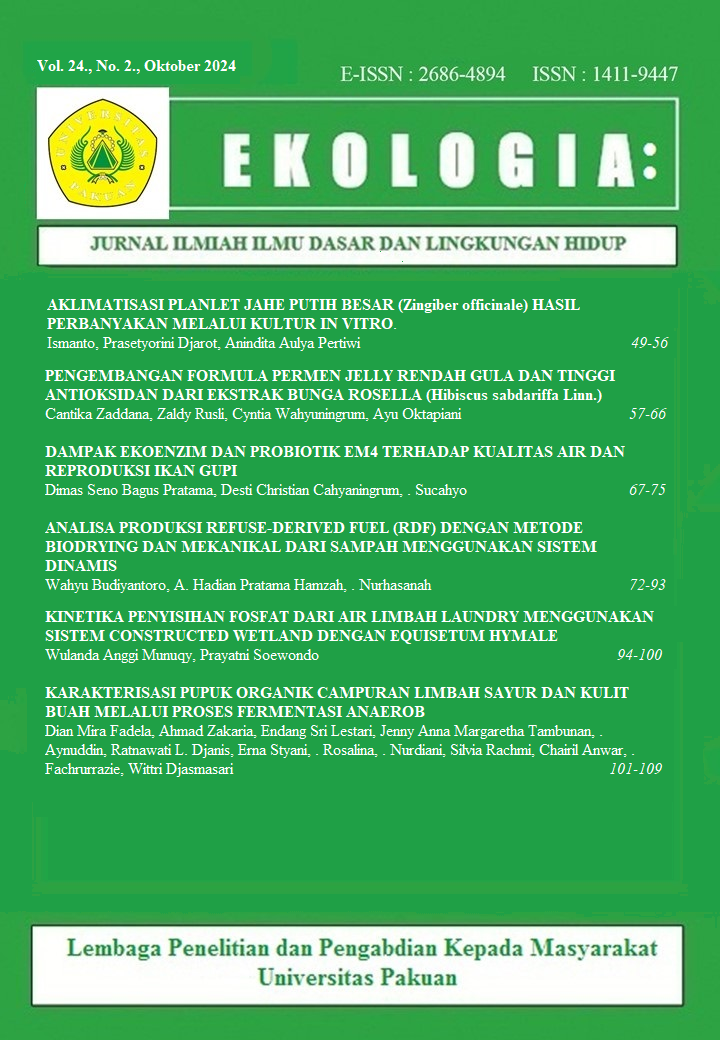KARAKTERISASI PUPUK ORGANIK CAMPURAN LIMBAH SAYUR DAN KULIT BUAH MELALUI PROSES FERMENTASI ANAEROB
Abstract
Food waste is a significant environmental issue, leading to resource wastage and greenhouse gas emissions. This study examines the treatment of food waste through anaerobic fermentation (AF) and composting, aiming to recover value from waste and reduce negative environmental impacts. In this research, food waste, fruit peels waste, dry leaves, rotten kale and mustard greens, and other organic materials were composted using an anaerobic composter, with observations covering pH, temperature, moisture content, and nutrient levels such as nitrogen, phosphorus, and heavy metals. The results show that the compost pH ranged between 7.2 and 7.4, meeting the standards of SNI 19-7030-2004. Total nitrogen content reached 1.78-3.10%, while phosphorus ranged from 0.5-1.2%. Heavy metal concentrations, including lead (Pb) and cadmium (Cd), were below the safe limits for organic fertilizers. In conclusion, AF and composting techniques effectively convert food waste into high-quality organic fertilizer that meets national standards, with the potential to reduce environmental pollution.
Keywords: Anaerobic compost, C/N ratio, C-Organic, Heavy metals
Downloads
Published
How to Cite
Issue
Section
License

This work is licensed under a Creative Commons Attribution-NonCommercial-ShareAlike 4.0 International License.













